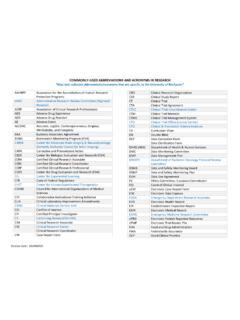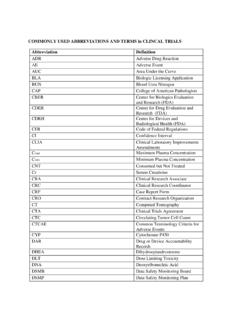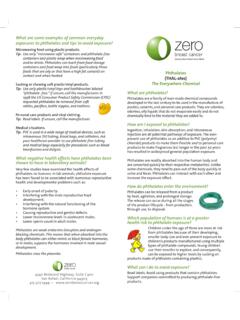Transcription of Foundation Concepts of Health Management Information …
1 Foundation Conceptsof Health ManagementInformation :Tan 3/18/09 2:57 PM Page 1 Jones and Bartlett Publishers, LLC. NOT FOR SALE OR :Tan 3/18/09 2:57 PM Page 2 Jones and Bartlett Publishers, LLC. NOT FOR SALE OR Management Information Systems:A Managerial PerspectiveJoseph Tan31 CHAPTERCHAPTER OUTLINES cenario: Key Trends Contributing to the Merging of Enterprise and Health InformationExchange ModelsI. IntroductionII. Evolution of HMISIII. HMIS Components and Basic Functions HMIS Components HMIS Basic FunctionsIV.
2 HMIS CulturesV. ConclusionNotesChapter QuestionsMini-Case: :Tan 3/18/09 2:57 PM Page 3 Jones and Bartlett Publishers, LLC. NOT FOR SALE OR c e n a r i o : Key Trends Contributing to the Merging of Enterpriseand Health Information Exchange Models1 Informatics Corporation of America (ICA), with its website ( ) offeringinsightful materials for the interested readers, is a Health Information technology (HIT) organi-zation whose mission is to provide clinicians and healthcare providers with more or less seam-less access to Information extracted from various uncoordinated systems for patient diagnosisand evaluation.
3 Recently, ICA sent out a press release to various stakeholders in the healthcareinformatics (HI) community outlining five key trends shaping the development of Health infor-mation exchanges (HIE) among large healthcare organizations:1. The growing impetus for healthcare provider An increasing focus on the need to manage chronic Increased patient expectation of personal involvement in the care Market pressures for improved hospital physician Advances in technology facilitating system an increasing number of baby boomers and the elderly constituting the population,it is envisaged that these trends will become more prevalent for healthcare services organi-zations in the near future.
4 These trends highlight the benefits which community-based healthcare models can offer allconstituents physicians, patients, and healthcare providers across the continuum of care, saysGary M. Zegiestowsky, chief executive officer (CEO) of ICA. The gap between traditional en-terprises and HIE is closing, with growing connectivity for physicians and ultimately the entirehealthcare community in certain cities or regions. We believe this is signaling a paradigm shiftthat has both near- and long-term implications for healthcare and HIT.
5 In order to keep pace with these trends, Zegiestowsky continues, physicians in every com-munity first need intuitive, proven technology solutions aligned with clinical workflow to speedthe adoption of electronic Health records. Moving toward patient-centric care will be possiblewhen all providers across the broad spectrum of care are able to access and utilize a unified pa-tient record in combination with tools that enable better care. ICA s response to this growing trend is the use of an exchange platform created for both en-terprise and HIT systems, such as the A3 Align Solution.
6 For 10 years, practicing physiciansand informatics professionals from Vanderbilt Medical Center have developed this technology,which has eventually been installed at Bassett Healthcare s enterprise comprising four hospitalsand 27 clinics in Cooperstown, New York. A3 Align Solution will also be implemented by boththe Montana and Northwest Healthcare for HIE. In addition, Vanderbilt distributed this sametechnology across its 40 facilities in the Mid-South eHealth Alliance, a successful HIE in west-ern these major trends encouraging HIE among healthcare services organizations, what doyou believe are the benefits of having all of your Health Information made freely accessible andinterchangeable among all of your caregivers?
7 What would be your worst fear? :Tan 3/18/09 2:57 PM Page 4 Jones and Bartlett Publishers, LLC. NOT FOR SALE OR IntroductionAs we enter this world, how did we become aware and conscious of who we are, and of thingsthat surround us? How did we learn about the myriad ideas, sights, sounds, and smells and themany events that we see, hear, feel, and witness in the surrounding space in which we live andbreathe for each day of our lives? Aren t data and Information the essential constructingblocks in our lives?
8 Isn t knowledge the central intellectual core that links everything else toform meanings, interpretations, and actions? Aren t Information systems innate in each andevery one of us as human beings who find it so very natural to process incoming streams of stimuli continuously, seamlessly, and automatically irrespective of how cognitively complexthese stimuli may at first appear to be? Seemingly, all of us have already been introduced some-what to the subject of Health Management Information systems (HMIS) even from the first dayof birth as we woke up from our deep sleep inside our mother s wombs, most likely, withinthe confines of a healthcare or maternal Health -related field of HMIS is inherently complex.
9 Take the myriad terminologies employed in thistext as an example. There are subtle differences even with major terminologies used to describethe field. For instance, Health Management Information systems (HMIS), which is the term usedliberally throughout the first edition of this text, has, in and of itself, a managerial slant, andwhereas healthcare Information technology(HCITor Health IT HIT) has a technology slant, Health Information systems (HIS)or healthcare Information systems (HCIS)may be interpreted asthe umbrella term with a systems or Information systems connotation.
10 Informaticsis anothercommonly used term among European researchers, and Health informaticsor clinical informaticsgenerally refers to the application of data methods in medicine, healthcare services, and clinicalpractices. For this reason, some authors, as will become apparent in the latter part of the text,use the terms Health informatics (HI)and medical informatics (MI)as well as e- Health (electronichealth). Thus, in this edition of the HMIS text, for the sake of simplicity and to further reducecomplexities for less sophisticated readers, we allow the usage of these several and diverse termi-nologies to be more or less interchangeable among the works accumulated by the different con-tributing authors and accompanying editors.

















